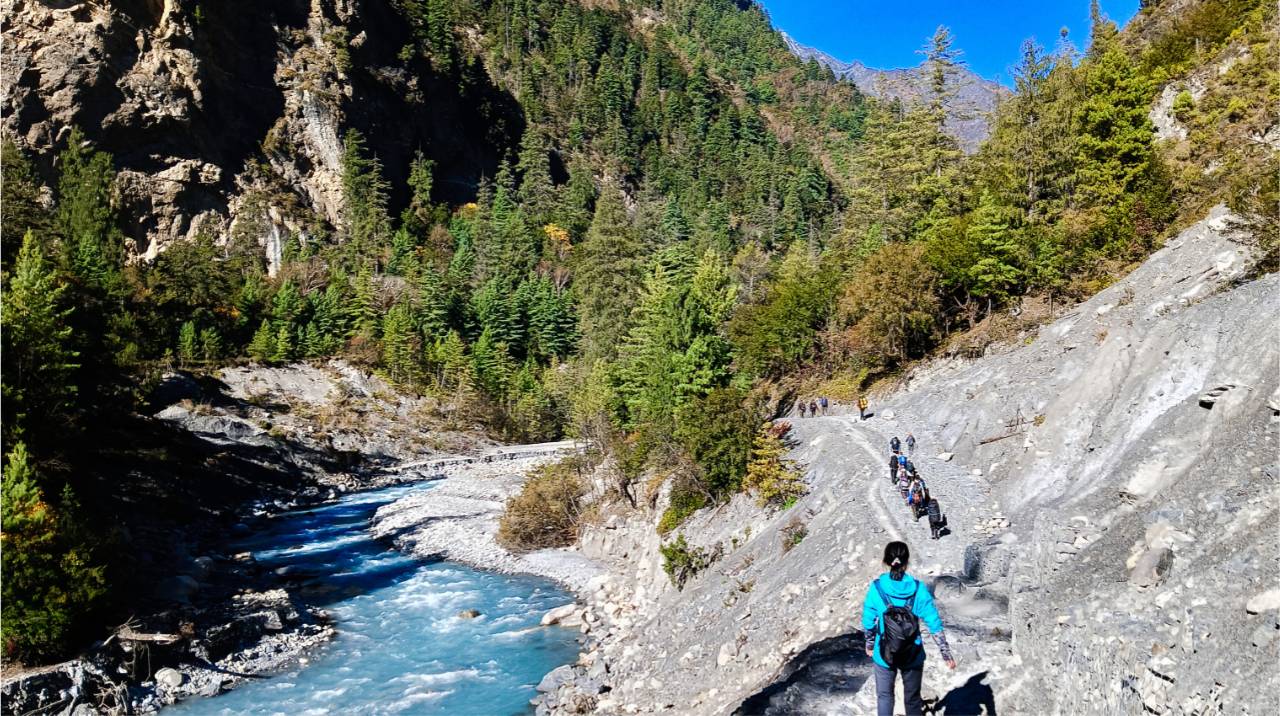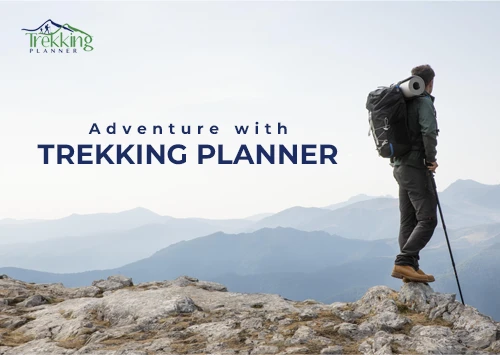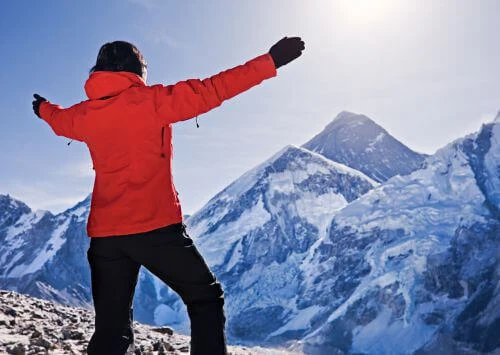Annapurna Base Camp Trek VS Annapurna Circuit Trek
Planning for a trip to Nepal and want it to be a gratifying one. Well, then you are like most of all the traveler who comes to Nepal in search of some never forgetting experiences and moments. Nepal might be small in size, but it surely packs itself with all the high-flier stuffs that every adventurer junkie wishes to have. But for most of the travelers who come upon Nepal, wish to explore and visit the most popular trekking region of Annapurna Region to satisfy their hunger for awe-inspiring trekking experience.
Here to be precise, you can never know what you will get unless you risk jumping into the unknown. So, in this blog, I am going to provide travelers like you with some insights on Annapurna Base Camp Trek and Annapurna Circuit Trek to help you decide. First of all, let me just tell you that both treks are spectacularly amazing, so if you feel like doing both, go for it. But if your mind is stuck on choosing only one trek from those two treks then continue reading on. Normally, the trek to the base camp of Mt. Annapurna is largely offered to those trekkers who have less holiday time period as this trek is shorter compared to the Annapurna Circuit Trek, which circumvents the Annapurna massif in an anti-clockwise direction.
If you want to know which one is more popular than the others, then I can easily tell you that the Annapurna Base Camp Trek is the most popular trek amongst others, not just in the Annapurna Region of Nepal but also in the entire world. As the majority of the trail is untouched by the developed roads and vehicles, it shall feel more genuine to trek in Annapurna Base Camp trail if you want to experience pristine natural trails. On the contrary, the Annapurna Circuit Trek has trails which have majorly connected by roads so trekkers may not feel like trekking while trollies of vehicle go past them while hurling winds of dust at their faces.
.jpg)
Amiability and cordiality play a large factor on both of these treks. Anyone wanting to visit different distinct regions of Annapurna Region while experiencing exotic locations and settings, they might prefer Annapurna Circuit. On an average walking basis, you have to cover a lot of ground in just one day while on Annapurna base camp and additionally, you have to traverse past several ups and downs so be prepared for that if you are going on Annapurna base camp trek. While on Annapurna Circuit Trek, you don’t have to go through that much ups and downs and it will be less troublesome for you.
Culturally you also can experience a lot of diversity while on a trail of Annapurna Circuit Trek. Generally, because you get to visit many places while ascending up through hilltop local villages filled with terraced rice fields. Now if you are a foody like me then you are waiting to know about where the food is more delicious with differing menus. On that sense, Annapurna Base Camp trek is more for you as the teahouses on the route during this particular trek has lots of diverse food menus, not just the stereotypical “Dal Bhat”. But it will cost you as the prices are expensive if you order some extra.
Now, We cannot specifically say which trek is better but I surely hope that after reading the above-mentioned points you are now fully capable of deciding for yourself. Lastly, just pre-plan everything and think which fits chiefly with your schedule and style of trekking which might help you decide better.
Trek Duration and Route Style
If you are short on time, Annapurna Base Camp is the more compact option. You can complete it in as few as 15 days if you are fit and acclimatized. The route follows an in-and-out path from Nayapul near Pokhara, winding through beautiful villages and into the heart of the Annapurna Sanctuary.
On the other side, The Annapurna Circuit is longer and makes a complete loop around the whole Annapurna sanctuary. It takes normally 17 days to complete. Annapurna Circuit begins with green valley in Besisahar and finishes with arid Mustang area.
Summary Table:
Trek | Duration | Route Type | Normal Start / End |
ABC | 15 days | Out-and-back | Pokhara - Nayapul - ABC |
ACT | 17 days | Circular loop | Besisahar - Manang - Thorong La - Jomsom |
Nepal Trekking Planner also provide short treks as:
Annapurna Base Camp Short Trekking - 8 Days
Annapurna Circuit Short Trek - 10 Days
Altitude and Acclimatization
Altitude plays a major role in deciding your trek. The Annapurna Base Camp Trek reaches 4,130 meters, which is high but manageable for most with proper pacing. Most trekkers don’t need extra acclimatization days.
Annapurna Circuit, on the other hand, climbs to a whopping 5,416 meters at Thorong La Pass - one of the highest trekking passes in the world. To safely reach this altitude, you’ll need at least one or two rest days, typically in Manang for acclimatization. The risk of Acute Mountain Sickness (AMS) is real on the ACT, so preparation is key.
Summary Table:
Trek | Max Elevation | Acclimatization Needs | AMS Risk |
ABC | 4,130 m | Moderate | Moderate |
ACT | 5,416 m | High (extra rest days) | High |
Scenery and Landscape Diversity
Both treks are stunning, but the Annapurna Circuit takes the crown for diversity. You start in green rice fields, trek through pine forests, walk across windswept deserts in Mustang, and cross icy passes surrounded by giants like Dhaulagiri and Annapurna.
Annapurna Base Camp is more focused. It is all about the climb into the Annapurna Sanctuary, surrounded on all sides by high peaks. You can see Machapuchare (Fishtail) up close. You will pass through rhododendron forests.
So, if variety is your thing, ACT wins. If dramatic alpine scenery and glaciers are what you want, go with ABC.
Summary Table:
Trek | Key Landscapes | Scenic Highlights |
ABC | Alpine valleys, glaciers, forests | Annapurna Sanctuary, Machapuchare |
ACT | Subtropical forest to high-altitude desert | Thorong La, Kali Gandaki Valley, Tilicho Lake |
Learn about, Mountains To See On The Way to Annapurna Base Camp Trek.
Culture and Local Life
The ABC trek is rich in Gurung and Magar culture. Especially around villages like Ghandruk and Chhomrong. You will experience traditional hospitality, stone-paved villages, and perhaps catch a glimpse of local dances or festivals of Nepal.
In contrast, Annapurna Circuit is a trading trail set somewhere within different ethnic areas, starting at the lowland Hindu valley to villages such as Manang, and Braga that are Tibetan-Buddhist oriented. You will observe monasteries, prayer wheels, and traditionalism of the ancient traditions. Muktinath Temple is a venerated Hindu as well as Buddhist site that you cannot afford to miss.
Summary Table:
Trek | Main Ethnic Groups | Cultural Highlights |
ABC | Gurung, Magar | Chhomrong, Ghandruk villages |
ACT | Thakali, Manangi, Tibetan-influenced | Braga monastery, Muktinath temple |
Difficulty and Physical Challenge
Annapurna Base Camp has moderate difficulty. There will be some steep staircases and elevation gain, not very steep though. It is perfect to average intermediate or initial fit hikers.
Circuit Annapurna is more difficult. It is not only longer, but the Thorong La Pass brings much more challenge with high altitude and many hiking days. The day can be 8-10 hours and particularly near the pass.

Summary Table:
Trek | Physical Challenges | Notable Challenges |
ABC | Moderate | Steep stone steps, moderate altitude |
ACT | Moderate to Hard | Long days, high altitude, Thorong La Pass |
Recommendation Read:
How Roadways are Changing the Annapurna Circuit Trek Experience
Accommodation and Food
Both treks operate on a teahouse system; you will eat and sleep in local lodges run by mountain communities. On the ABC trek, teahouses are basic but comfortable. You will consume tonnes of dal bhat, soups and noodles.
There is greater diversity in the ACT. In rural areas such as plain Manang and Muktinath there are even bakeries, yak cheese, and espresso! Partly, the lodges are more developed in general thanks to having the route more popular and longer.
Summary Table:
Trek | Teahouse Availability | Food Options |
ABC | Basic teahouses | Dal Bhat, momo, pasta |
ACT | Better range (more variety) | Thakali set, bakery goods in Manang |
Cost and Budgeting
Generally, ABC is more budget-friendly because it’s shorter. You’ll spend less on food, accommodation, permits, and guide/porter services.
The ACT requires more days on the trail, meaning more meals, accommodations, and possibly internal flights (e.g., Jomsom-Pokhara). Side trips like Tilicho Lake also add to the cost.
Pro tip:If budget is a constraint but you still want a longer trek, consider shortening ACT by flying out from Jomsom.
Best Time to Trek: Annapurna Base Camp vs Annapurna Circuit
When you’re planning either of these iconic treks, timing is everything. The weather and trail conditions can make or break your experience. From soaking rains to crystal-clear mountain views. While both spring (March-May) and autumn (September-November) are ideal, there are seasonal nuances worth noting for each trek.
Spring (March to May)
This is one of the most popular seasons for both treks and for good reason.
Weather: Days are warm and nights are pleasantly cool, especially below 3,500 m.
Views: The skies are relatively clear in the mornings, though occasional haze might set in later in the day.
Highlights: Rhododendrons bloom like crazy along the ABC trail, adding vibrant reds and pinks to your trek. On the ACT, you’ll see dry landscapes in the Manang region come alive with wildflowers and yak caravans.
Great for photography and first-time trekkers. Moderate crowds.
Note: For detailed info on ABC trek season, read the blog "
Best Time For Annapurna Base Camp Trek"
Autumn (September to November)
Hands-down, the most popular and stable trekking season in Nepal.
Weather: Crystal-clear skies, dry trails, and consistent temperatures. You’ll get those postcard-perfect shots of the Himalayas without a cloud in sight.
Crowds: This is peak season, so expect busier teahouses and more fellow trekkers, especially on the ABC route.
Highlights: Harvest season is in full swing. You’ll witness colorful village life especially on the ACT, where you pass through more diverse ethnic communities.
Monsoon (June to August)
The ABC trek isn’t ideal in the monsoon due to slippery trails and leeches in the forested sections.
ACT is a better pick here because its upper sections (like Manang and Mustang) fall in a rain-shadow area, meaning it’s drier even during monsoon.
Still a bit cloudy, especially in the lower parts of the circuit.
The challenge is that landslides, muddy trails, and travel delays are common; you will need patience and flexibility.
Winter (December to February)
It’s not the most popular time, but for some, that’s the charm.
ABC remains accessible, though cold and snowy above 3,000 m. Fewer trekkers mean a peaceful route and great sunrise views.
ACT becomes risky, as Thorong La Pass is often snowed in and can be impassable.
The view is crystal clear, and the snow adds a dramatic beauty to the landscape.
Summary Table
Trek | Best Time | Weather Considerations |
ABC | March-May, Sept-Nov | Risk of cloud cover in monsoon; cold but clear in winter |
ACT | March-May, Sept-Nov | Drier during the monsoon due to the rain-shadow; Thorong La is risky in winter |
Side Trips & Add-ons on the Annapurna Base Camp (ABC) Trek
While the ABC trek is more direct and compact in its route, there are still a few rewarding side experiences that can make your journey more memorable. Some of the special add-on trips on the way back are:
Jhinu Danda Hot Springs
After days of trekking through rugged trails and chilly mountain air, Jhinu Danda’s natural hot springs feel like heaven. Tucked along the Modi Khola river, it’s a short 20-minute hike downhill from the village. Soaking in the warm waters while listening to the rushing river and staring up at the surrounding greenery is a perfect post-trek treat for tired muscles.
Ghandruk Village (Optional Start or End)
Although not technically a side trip, Ghandruk, a charming Gurung village, is often used as a scenic entry or exit point. With cobblestone lanes, traditional houses, and jaw-dropping views of Machapuchare (Fishtail), this stop adds a cultural flavor to your trek.
ABC is more of a linear trek, so side trips are limited. But the few available options offer comfort and cultural charm.
Side Trips & Add-ons on the Annapurna Circuit Trek (ACT)
The Annapurna Circuit is longer and more geographically diverse, which naturally means more side adventures, both natural and cultural. These detours are what make ACT feel like multiple treks in one.
Tilicho Lake (5,416m)
This is hands down one of the most epic add-ons in all of Nepal. It is one of the highest lakes in the world with soaring sheer cliffs and glaciers. The hike to Tilicho from Manang takes about 3 days round trip and is worth every step for the surreal alpine scenery.
Muktinath Temple
After conquering the Thorong La Pass, you descend into the Mustang region, where you’ll find Muktinath, a sacred pilgrimage site for both Hindus and Buddhists. With 108 water spouts and an eternal flame, it’s a peaceful place to reflect on your journey.
Ghorepani Poon Hill
If you are ending your trek in Tatopani, you can take a detour up to Poon Hill. You will experience the sunrise views over Dhaulagiri and Annapurna. It’s a popular spot among photographers and is worth the early morning climb. You will be trekking for 10 days.

FAQ’s
Can I do both ABC and ACT in one trip?
Yes, you absolutely can, but it’s not a quick adventure. You’ll need at least 25 to 30 days to do it comfortably. Most trekkers connect the two routes by flying from Jomsom to Pokhara or taking a jeep/bus to shorten the transition time. It is a great option if you’re looking to fully immerse yourself in the entire Annapurna region.
Which trek is harder?
The Annapurna Circuit Trek (ACT) is more physically demanding than the ABC trek, mainly and that is more so since it is long and goes round the Thorong La Pass 5,416m high. Good fitness is needed and the pass should be acclimatized carefully. Conversely, the ABC trek is short and has reduced elevation difficulties and is therefore beginner friendly.
Which one is more scenic?
Honestly, both are breathtaking in their own ways, but the Annapurna Circuit offers more geographical diversity, from lush forests to arid high-altitude deserts. You’ll also get panoramic views of Annapurna, Dhaulagiri, Manaslu, and Tilicho Lake. The ABC trek, though shorter, gives you dramatic alpine scenery and a close-up view of Annapurna I and Machapuchare


.jpg)





